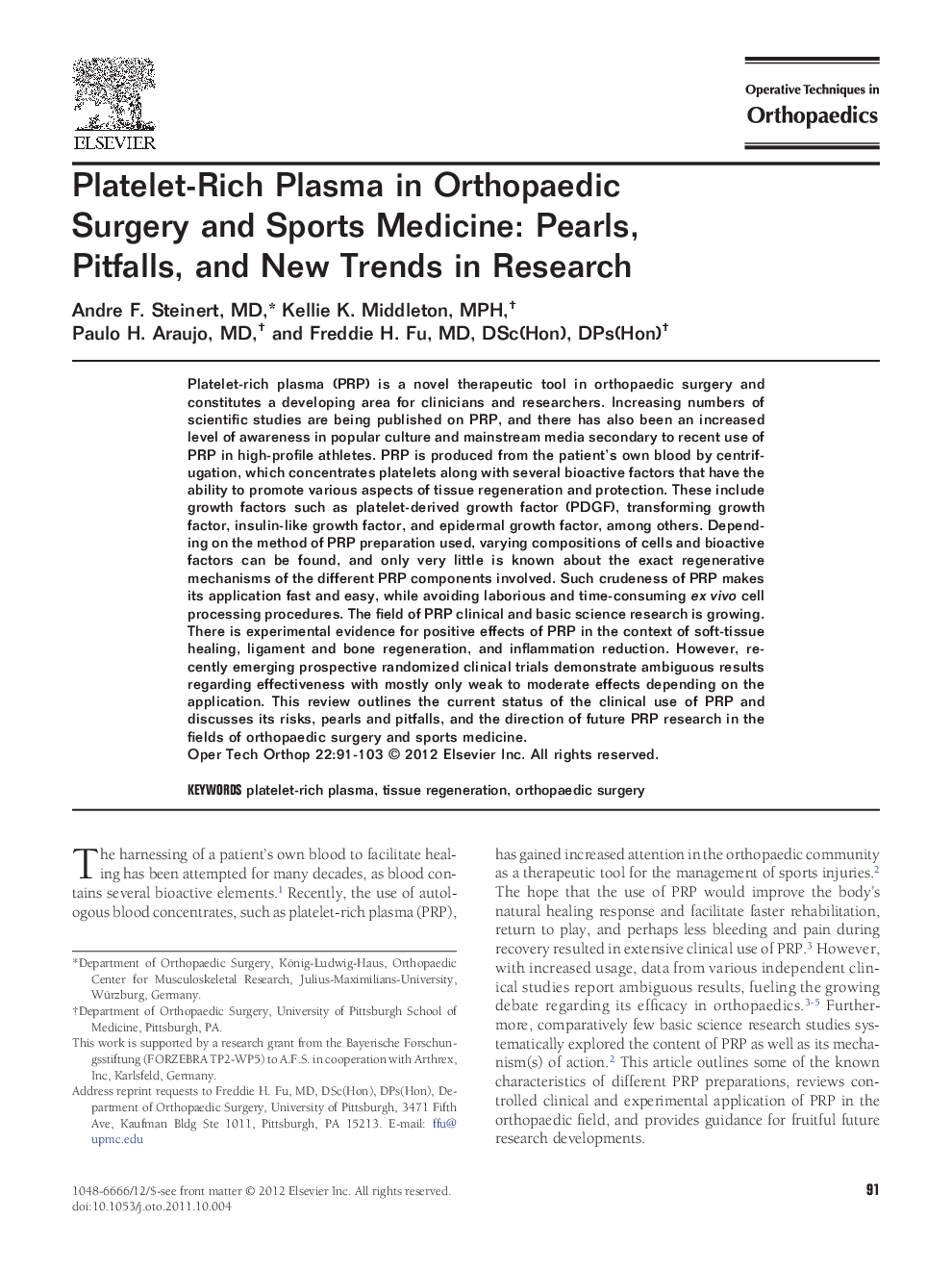| Article ID | Journal | Published Year | Pages | File Type |
|---|---|---|---|---|
| 4079034 | Operative Techniques in Orthopaedics | 2012 | 13 Pages |
Platelet-rich plasma (PRP) is a novel therapeutic tool in orthopaedic surgery and constitutes a developing area for clinicians and researchers. Increasing numbers of scientific studies are being published on PRP, and there has also been an increased level of awareness in popular culture and mainstream media secondary to recent use of PRP in high-profile athletes. PRP is produced from the patient's own blood by centrifugation, which concentrates platelets along with several bioactive factors that have the ability to promote various aspects of tissue regeneration and protection. These include growth factors such as platelet-derived growth factor (PDGF), transforming growth factor, insulin-like growth factor, and epidermal growth factor, among others. Depending on the method of PRP preparation used, varying compositions of cells and bioactive factors can be found, and only very little is known about the exact regenerative mechanisms of the different PRP components involved. Such crudeness of PRP makes its application fast and easy, while avoiding laborious and time-consuming ex vivo cell processing procedures. The field of PRP clinical and basic science research is growing. There is experimental evidence for positive effects of PRP in the context of soft-tissue healing, ligament and bone regeneration, and inflammation reduction. However, recently emerging prospective randomized clinical trials demonstrate ambiguous results regarding effectiveness with mostly only weak to moderate effects depending on the application. This review outlines the current status of the clinical use of PRP and discusses its risks, pearls and pitfalls, and the direction of future PRP research in the fields of orthopaedic surgery and sports medicine.
